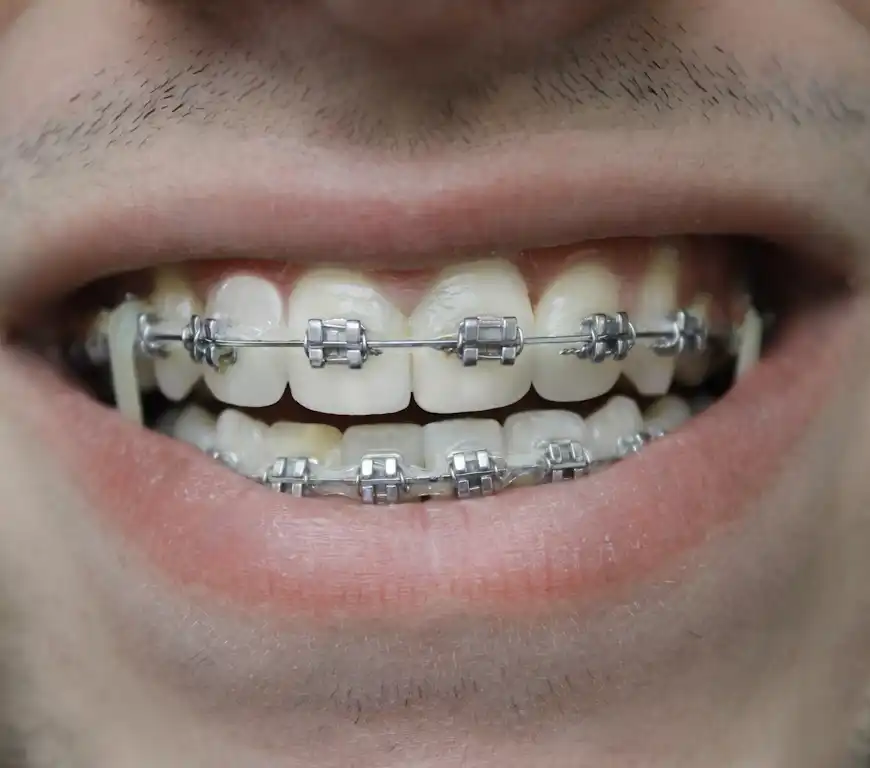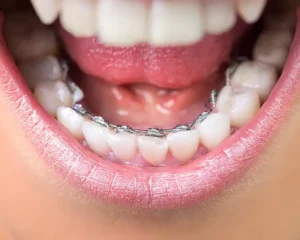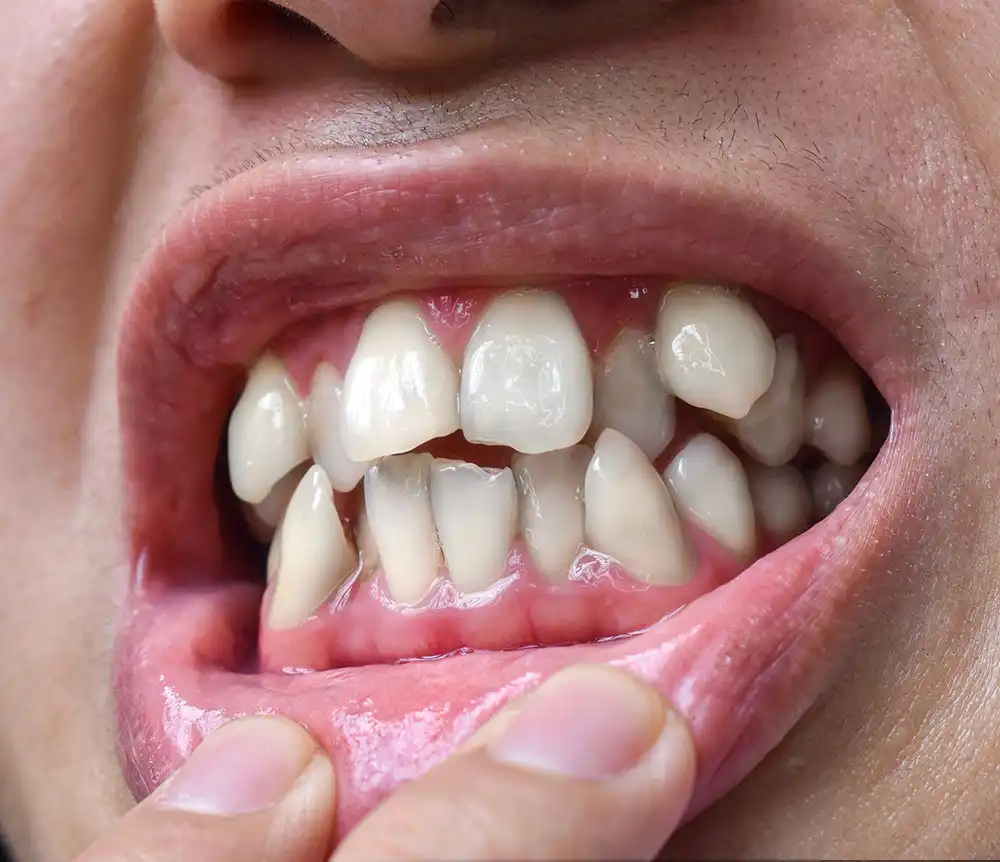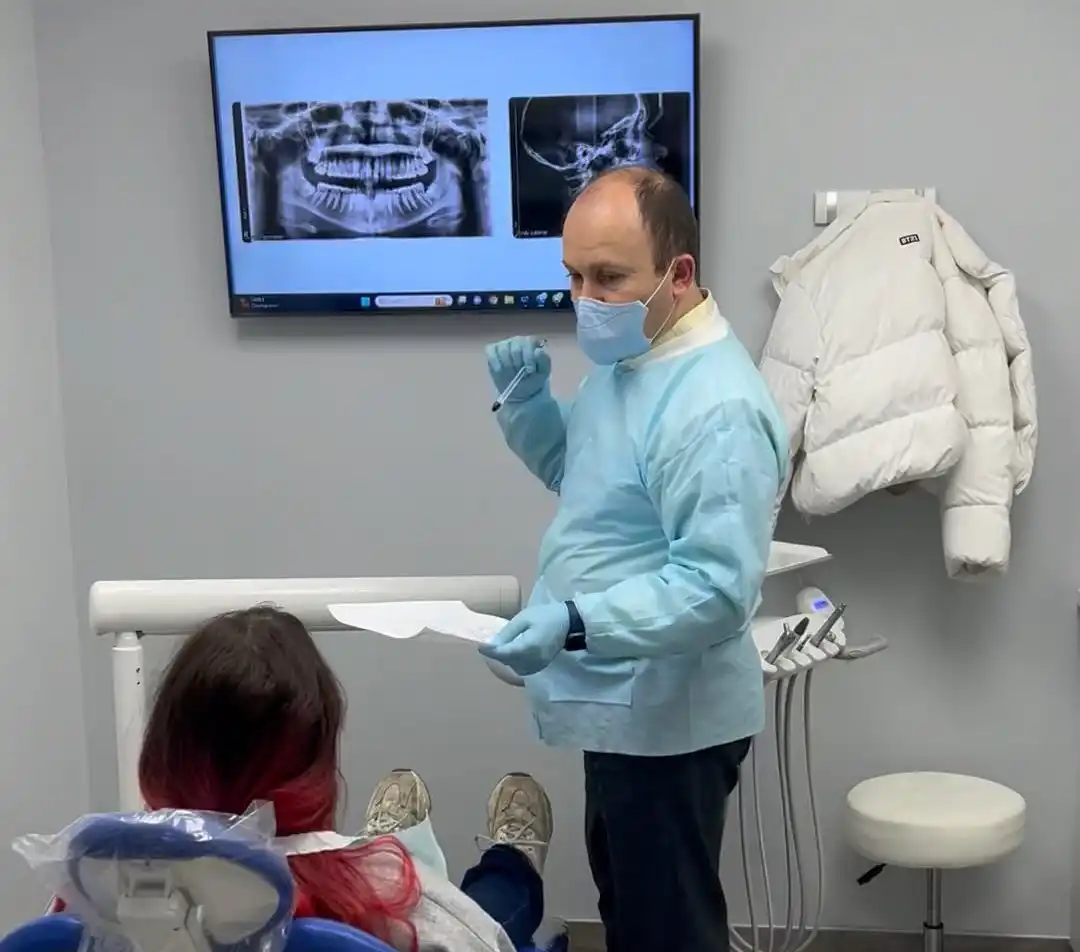Braces Treatment

At BP Smiles Orthodontics in Queens, NY, we transform smiles with personalized braces treatment options for children, teens, and adults. Led by Dr. Boris Pinhasov, a board-certified orthodontist, our team offers everything from traditional metal braces to discreet alternatives like Invisalign® all in a friendly, state-of-the-art environment.
We understand that getting braces is a big decision, and you might have concerns about discomfort, cost, or appearance during treatment and that’s okay. We address those worries with a patient-first philosophy, providing gentle, personalized care and a range of solutions (including nearly invisible braces) to make your orthodontic journey as comfortable and stress-free as possible.
Types of Braces We Offer
We provide several orthodontic treatment options so you can choose the one that best fits your needs and cosmetic preferences:
Traditional Metal Braces
Traditional metal braces are the most common type of orthodontic appliance and for good reason. Today’s metal braces are smaller, sleeker, and more comfortable than in the past, making them suitable for patients of all ages.
Metal braces use high-grade stainless steel brackets and wires to straighten your teeth efficiently and reliably. They are also very durable and often the most cost-effective option. Plus, kids and teens love that they can choose fun colored rubber bands at each appointment, adding a bit of personal style to their smiles during treatment.

Ceramic Braces
Ceramic braces work like metal braces but use clear or tooth-colored brackets (and sometimes white wires) that blend in with your teeth. This means you get the proven effectiveness of braces with a much less noticeable appearance. Ceramic braces are a popular choice for image-conscious teens and adults who want a more discreet treatment.
You’ll need to be diligent about brushing and flossing to keep the ceramic brackets clean and clear (to prevent any staining), but many patients find the extra effort worth it for the near-invisible look. With ceramic braces, you can smile confidently throughout treatment, knowing most people will hardly notice you’re wearing braces.
Lingual Braces
Lingual braces offer a way to straighten your teeth completely under the radar. These braces are attached to the back side of your teeth (the tongue side), so no one can see them when you talk or smile. Lingual braces are a fantastic option for professionals, performers, or anyone who wants their orthodontic treatment to be as invisible as possible. They are custom-made to fit the inner surface of each tooth and do require specialized expertise to use effectively.
We’re proud to offer this advanced option at BP Smiles, so you can achieve a beautiful smile with no visible brackets. You might need a short adjustment period as your tongue gets used to the braces, but before long you’ll speak and eat normally. Lingual braces provide the same effective results as traditional braces without any aesthetic concerns.
Not sure which braces option is right for you? Schedule a consultation with our Queens orthodontist, and we’ll help you find the perfect solution for your smile.

The Braces Treatment Process: Step by Step
- Braces Placement Day : Once you decide on a treatment plan, we’ll schedule the day to put on your braces. The process is painless, we carefully bond the brackets to your teeth and connect them with archwires. This appointment usually takes about an hour. You’ll leave our office with your new braces in place, plus instructions (and a care kit) to help you get started.
- Getting Used to Braces : In the first week or so after getting braces, your mouth will adjust to the new hardware. It’s normal to experience mild soreness or tenderness in your teeth and some irritation on your lips or cheeks. We recommend sticking to softer foods for a couple of days and using orthodontic wax on any brackets that rub the inside of your mouth. Before long (usually within a week), you’ll adapt to your braces and they will start to feel like a natural part of your routine.
- Regular Adjustments: Throughout your treatment, you’ll visit us about every 4-6 weeks for adjustments. During these check-ups, Dr. Pinhasov will change or tighten your wires, replace elastics (rubber bands), and ensure your teeth are moving as planned. After an adjustment, it’s common for your teeth to feel a bit tight or achy for a day or two, this is a sign the braces are working. Any soreness is usually very mild and fades quickly.
- Braces Removal & Retainers: When your orthodontic goals are achieved typically after 12 to 36 months, depending on your case, it’s time to take your braces off and reveal your new smile! Removing braces is quick and easy, and it’s an exciting milestone for you. After removal, we’ll fit you for a custom retainer to keep your teeth in their beautiful new positions. Wearing your retainer as instructed is key to maintaining your results for a lifetime. We’ll celebrate your success and make sure you have all the guidance you need to preserve your straight, healthy smile.
Who Is a Good Candidate for Braces?
Braces can help patients of almost any age achieve a healthier, straighter smile. You may be a great candidate for braces if you have:
- Crooked or crowded teeth
- Gaps or spaces between teeth
- Bite misalignments (such as an overbite or underbite)
If you or your child has any of these issues, orthodontic treatment could be the solution. Braces are not just for kids we successfully treat teenagers and adults of all ages. As long as your teeth and gums are in good health, there’s no upper age limit to improve your smile with braces. For children, the American Association of Orthodontists recommends an initial evaluation by age 7. This early check-up allows us to spot potential issues in jaw growth or incoming teeth.

Most children won’t need braces at age 7; often, we simply monitor their development until the time is right. Generally, kids begin braces once most permanent teeth have come in (around ages 11-14). Our orthodontist will assess each patient individually and recommend the best timing and type of treatment to achieve the best results.
Your Orthodontic Consultation and Diagnostic Exam
Your first visit to our Queens office will be a friendly, informative consultation. We start by getting to know you and understanding your goals for your smile. Dr. Pinhasov will examine your teeth and bite thoroughly, and we may take some diagnostic records (like X-rays or digital scans) to get a complete picture of your orthodontic needs.
After the exam, the doctor will explain any issues he finds and discuss the treatment options that can correct them. You’ll find out which type of braces or aligners we recommend for your case and about how long your treatment might take. We’ll also talk about the practical details of treatment. This includes the cost of braces and what your insurance might cover.
Our team will review payment plan options with you to make your care fit your budget. And of course, you’re encouraged to ask any questions you have whether about the process, how to take care of braces, or anything else. Our consultations are complimentary and pressure-free. You’ll walk away with a clear understanding of your options and what to expect, so you can make an informed decision at your own pace.
Adjustments & Comfort During Treatment
Regular adjustment visits are a normal and important part of braces treatment. You’ll typically come in every 4-6 weeks so we can make sure your braces are working properly. During these appointments, Dr. Pinhasov will check your progress and make any needed adjustments. For example, tightening or changing your archwires or replacing elastic bands.
These visits are usually pretty quick, and we’ll always ensure you’re comfortable. Sticking to your adjustment schedule is important; each visit keeps your teeth moving on course so you can finish treatment on time. It’s also normal to feel a bit of soreness or pressure in your mouth for a short time after getting your braces tightened (or when you first get your braces on).

This mild discomfort is actually a good sign that the braces are doing their job moving your teeth. Remember, if you ever experience anything more than minor discomfort or if something doesn’t feel right, our team is here to help. We want your braces experience to be as comfortable and positive as possible!
Why choose BP Smiles for your braces?
Board-Certified Expertise:
Treatment by a board-certified orthodontic specialist dedicated to exceptional results.
Comprehensive Options:
Metal braces, clear ceramic braces, lingual (hidden) braces, and Invisalign — find the perfect fit for your lifestyle.
Community Trusted:
Proudly creating beautiful smiles for patients from Flushing to Oakland Gardens, with countless before-and-after success stories and 5-star reviews.
Flexible Payments:
We accept most insurance plans and offer interest-free payment plans to fit your budget.
Patient-First Care:
A compassionate team that listens to your needs and treats you like family every step of the way.
Ready to start your journey to a straighter smile? Call (718) 290-9444 or contact us online to schedule your complimentary consultation today!

Our Office
Visit Us Online
Frequently Asked Questions about Braces
How Long will I Have to Wear Braces?
Treatment time with braces varies from person to person. In most cases, patients wear braces for 12 to 36 months (about 1 to 3 years). Minor corrections might be finished in around a year, while more complex cases, especially those correcting significant bite issues can take closer to three years. During your consultation, the doctor will evaluate your teeth and bite and give you an estimate of how long your particular treatment will likely take.
How much do braces cost?
Braces at our Queens office typically cost between $2,500 and $6,000 for the entire treatment. The price depends on your specific needs, how complex your case is, and the type of braces or aligners you choose. We will provide an exact quote after evaluating your teeth. Keep in mind, our fee usually includes all your regular adjustment appointments and even your first set of retainers at the end. We also offer flexible payment plans to make treatment budget-friendly, and we’ll check your insurance to see if it can cover part of the cost.
Will my insurance cover braces?
It depends on your insurance plan. Many dental insurance plans include orthodontic benefits that cover a portion of the cost of braces (especially for children and teenagers). Some plans have age limits or lifetime maximums for orthodontic coverage. At BP Smiles Orthodontics, we’ll help you find out exactly what your plan will pay toward braces. We handle the insurance paperwork for you to make sure you get the full benefit you’re entitled to. If your insurance only covers part of the cost (or none at all), don’t worry; we’ll work with you to set up a payment plan that makes the remaining cost manageable.
Do braces hurt?
Having your braces put on doesn’t hurt, but your teeth and gums can feel a little sore afterward. In the first few days with new braces (and for a day or two after each adjustment), you might experience a mild ache or tenderness in your mouth. It’s similar to the feeling after a good workout; your teeth are adjusting to the gentle pressure. The good news is this discomfort is temporary and usually fades within a week. To make yourself comfortable, stick to soft foods like pasta, yogurt, and smoothies for the first day or two, and you can use an over-the-counter pain reliever if needed. We’ll also give you orthodontic wax to cover any brackets that might irritate the inside of your cheeks at first. Most patients get used to their braces faster than they expect. After the initial adjustment period, you’ll likely forget you’re even wearing braces most of the time. And while you may feel a bit of soreness after each tightening appointment, it tends to be much milder and goes away quickly.
What foods do I need to avoid with braces?
You’ll need to avoid certain foods while wearing braces to prevent breaking a bracket or wire. Stay away from anything sticky, hard, or very chewy. For example, skip gum, taffy, caramels, and chewy candies since they can stick to your braces and even pull off brackets. Avoid hard foods like nuts, hard candies, popcorn kernels, and ice biting down on those can damage your braces. Extremely chewy or tough foods (like whole apples, raw carrots, bagels, or jerky) are risky too; if you do eat them, cut them into small pieces first. It might seem like a lot of your favorite snacks are off the table, but remember this is only temporary! There are still plenty of braces-friendly foods to enjoy, and we’ll give you guidance on what’s safe. Once your braces come off, you can eat whatever you like again and it’ll be even more enjoyable with your beautiful new smile.
When should my child see an orthodontist for braces?
The American Association of Orthodontists recommends that children have their first orthodontic evaluation by age 7. That doesn’t mean your child will get braces at 7; in fact, most kids won’t need braces until they’re around 11-14 years old, when most of the adult teeth have come in. The early check-up at age 7 is mainly to catch any big issues early and monitor the child’s growth. If we spot a problem (like a serious bite issue or jaw development concern) at a young age, we might do a simple early treatment to help correct it or prevent it from worsening. Otherwise, we usually wait until the appropriate time in the pre-teen or teen years to start full braces. Every child is unique, so we’ll let you know the best timing for your son or daughter. And keep in mind, orthodontic treatment isn’t just for kids; we treat many teenagers and adults too, whenever they’re ready to improve their smile.


